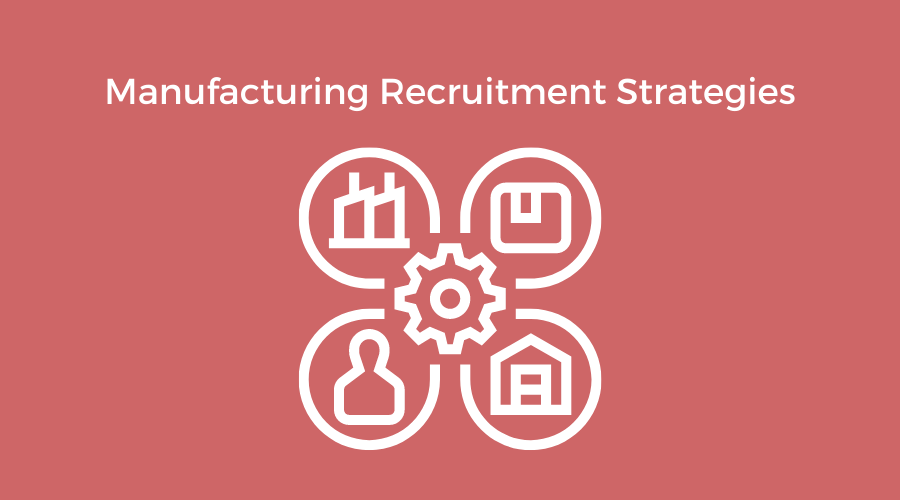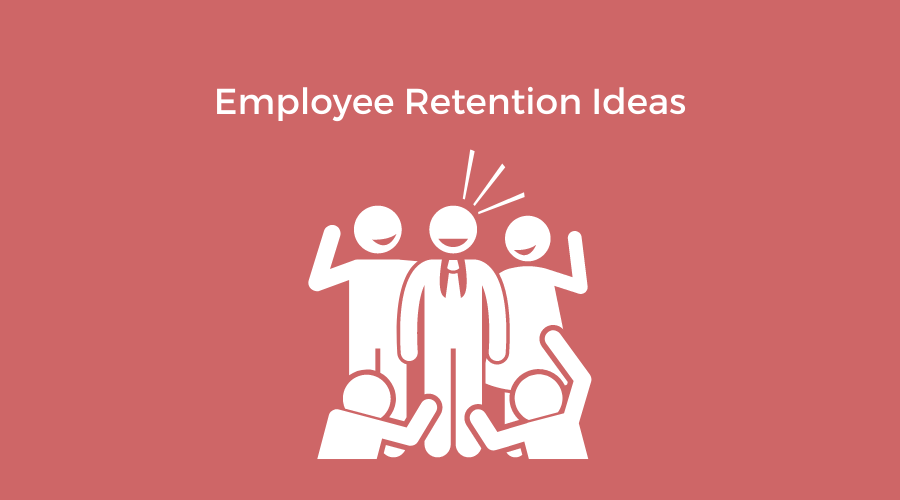Resources

Recruiting Tactics
3 min read
Writing Job Descriptions for Attracting Quality Talent
92% of small businesses say they get few or no qualified applicants. So how can you change that dynamic? Better job descriptions may help. Hiring quality talent has never been easy, but since the Great Recession ended a decade ago the difficulty has multiplied. Now, as the headline statistics above suggest, the COVID pandemic had made it harder still to hire workers with the skills employers want. To entice candidates to apply, employers are offering signing bonuses and referral fees, sweetened benefits and pay and flexible schedules and remote work. Yet too many are overlooking one, simple and inexpensive way to attract applicants – a better job description. Writing job descriptions for attracting quality talent gets too little attention, yet for the majority of candidates, it’s the job description that makes them decide to apply or move on to the next opportunity. The Job Description is an Advertisement Talent management strategist Dorothy Dalton laments that most job descriptions don’t get changed much, while jobs do. When an opening comes up, the job description from the last time is dusted off and reposted. “Generally the only changes I see are to inflate the qualifications.” Ongig, a job description technology company, tells us there are at least a dozen reasons why a job description fails. Job titles are too long or too obscure. A majority begin by telling potential candidates about the company rather than the job. Too many read as if written by lawyers and are too complicated or impersonal. Others are too long. Still others are laden with gender-biased language like “go-getter,” “dominant” and “champion.” Writing job descriptions for attracting quality talent isn’t difficult. It starts with an appreciation of some of the science behind what gets a candidate interested in actually reading a job post, which, of course, is the first step in getting them to apply. LinkedIn says job seekers spend less than 50 seconds deciding if a job is a fit. They spend well over a minute reading through one that appears to match their interests and skills. The first place they look is the job title. If it’s more than 60 characters – that’s characters, not words – few candidates will click it to apply, according to an analysis by Appcast, a global recruitment ad placement company. The same is true if the title is shorter than 20 characters. LinkedIn points out that words like “wizard,” “rock star,” and “guru” in the title may be cute, but they don’t give a job seeker anything specific about the job. “Data Analyst” is more effective than “Data Guru” because it’s immediately clear what the job is. “A poorly written job title might puzzle the candidate so much that they don’t click through to read your job description,” explains Ongig. The Long and Short of Job Titles Just as job titles can be too long or too short, Appcast found the same applies to job descriptions. The sweet spot to get the highest percentage of candidates to click to apply are job descriptions between 4,000 and 5,000 characters. That’s around 500 words. Ironically, ZipRecruiter found the average job posting in 2019 was 70% longer than it was in 2016. That’s not necessarily a negative if the job descriptions were too short in the past and now provide more specific and helpful information. Even more important to writing job descriptions for attracting quality talent are the qualifications. The issue of qualification inflation is a key obstacle to getting candidates to apply. One of the leading studies of the issue by the Harvard Business School compares the educational requirements in job postings with those held by the people actually doing the work. In just one example, the researchers found that 67% of the job postings for production supervisor asked for a college degree. Yet, of those doing the job – foremen and other first line managers — only 16% had a degree. “By engaging in degree inflation, employers restrict their access to a wider pool of talent in several ways,” the report says. “Postings for many jobs traditionally viewed as middle-skills jobs now stipulate a college degree as a minimum education requirement, while only a third of the adult population possesses this credential.” It isn’t just education requirements that are inflated. ZipRecruiter’s study of the millions of its job postings found that as the unemployment rate was creeping lower between 2016 and 2018, employers were including more skills in their requirements. Not only does this narrow the pool of qualified candidates, it has an effect on who will apply for the job. Women won’t apply for a job unless they meet most or all of the qualifications. Men will apply if they meet 60%. In writing job descriptions for attracting quality talent the first step should be to analyze what qualifications are really necessary. Remember that headline at the beginning of this article about tech executives worrying they won’t find enough qualified people to hire? CNBC’s survey found they’re adopting hiring strategies that are an about face from their past practice. Besides instituting training and apprenticeships, a quarter are eliminating academic requirements, while 42% are rewriting their job descriptions and titles entirely. To interest more candidates and get more applicants, update those job descriptions to bring them into line with what’s really needed to do the job. Tighten up the inflationary skills and requirements, use gender-neural language and keep your job titles clear and short. Be specific about what the job is, but avoid delivering a laundry list of tasks. Instead, prioritize what’s crucial and what makes the job fulfilling. Writing job descriptions for attracting quality talent should be like speaking to the candidate as if they were right there in front of you. Spell out the good (and the not so good) aspects of the job to paint a realistic picture for potential candidates. When possible also use imagery and graphics to highlight the job in action. It’s a visual web and sometime job writers forget the appeal of pictures and images to sell the role. Contributions by John Zappe
Continue reading
Human Resources
2 min read
What Is People Analytics?
BBVA, USA, a large, regional bank knew turnover was a problem. It was clear from the HR reports. But before they could address it, the HR team first had to know what jobs and where was attrition the greatest. For the answers, they turned to people analytics. Analytics identified the jobs most at risk and the branches for the biggest share of the turnover. Armed with that knowledge, BBVA developed a plan targeting those jobs and those branches, and cut turnover almost in half. Impact like that is why people analytics is becoming such a key part of human resources. But just what is people analytics? Or, as it’s also called, talent analytics, workforce analytics and HR analytics. Defining People Analytics It’s the collection and analysis of HR and organizational data to provide insights into problems or practices with the objective of improving business performance. Some answers to what is people analytics are broader, taking into account external data such as industry benchmarks. Toolbox goes even further defining it as “the deeply data-driven and goal-focused method of studying all people processes, functions, challenges, and opportunities at work to elevate these systems and achieve sustainable business success.” However it’s defined, global analytics consultant David Green says in LinkedIn’s 2020 talent trends report, “Providing insights to support better decision-making is the key purpose of people analytics.” The pharmaceutical firm Johnson & Johnson put that to the test a few years ago. Company recruiters were shifting away from recent college grads in favor of hiring more experienced workers. Acting on instinct, recruiting teams claimed experienced hires made better workers and stayed longer. HR leaders weren’t convinced. So they turned to their people analytics group, which found the recruiters were wrong. New grads not only performed almost as well as the seasoned workers, but they actually stayed longer. The analysis, explained the head of the people analytics team, “dispelled a myth in our organization.” After the analysis was reported, college hiring jumped by 20%. Results like that – and there are many, even more dramatic such as an IBM attrition project that saved the company $300 million – are making people analytics a core HR function. Now, instead of asking “What is people analytics?” HR leaders and C-suite executives are asking how to implement analytics. A study published in Journal of Organizational Effectiveness People and Performance, declared: “By 2025, HR analytics will have become an established discipline, will have a proven impact on business outcomes, and will have a strong influence in operational and strategic decision making.” LinkedIn’s survey of HR professionals found almost three-quarters believe people analytics “will be a major priority for their company over the next 5 years.” Still, a majority of these professionals admit they “need help putting basic people analytics into practice.” Perhaps for that reason, the analytics consultancy Millan Chicago, sees “the gradual mainstreaming of people analytics” as the most important trend in analytics this year. “As businesses begin to realize the critical importance of data, investing in analytics will no longer become something ‘shiny and new,’ but rather a business essential.” Instead of asking “what is people analytics,” HR leaders are recognizing what people analytics has done to improve business performance wherever it’s been adopted and are hastening to do the same for their organization. John Zappe, contributed to this article.
Continue reading
Human Resources
2 min read
Offboarding Process Tips
Think for a moment about how much time and effort go into recruiting and onboarding the talented people you hire. How does that compare to what you invest in their eventual offboarding? With very few exceptions, the offboarding process is almost an afterthought. According to research by Aberdeen, only 29% of companies have a formal offboarding program. Even then, many of those are little more than checklists of the paperwork that needs to be completed by the departing employee. Other research by the business strategy consulting company SBI found HR professionals invest 8x more time developing and managing onboarding programs than they do on offboarding. Why does this matter? Because a good offboarding process tips the scales in favor of the employer when it comes to – surprise! – retention and recruiting. Employees who leave an employer feeling good about the way their exit was handled are much more likely to refer others to the company, leave positive reviews, mentor their replacements and return as boomerangs. “A well-managed offboarding process can turn employees into loyal alumni who become customers, suppliers, boomerang employees, mentors to current workers and ambassadors for the firm,” said Erin Makarius, associate professor of management at the University of Akron in Ohio, an author of a report this spring in the Harvard Business Review. An array of studies and research don’t just detail the importance of offboarding, they analyze the value, offering specific offboarding process tips to help HR teams develop the kind of programs that create brand ambassadors of former employees. Most employers already have procedures for handling the legal requirements and other basics. A successful offboarding program goes beyond that, says Makarius and his co-author, Alison M. Dachner, associate professor at John Carroll University. Here are some of the more valuable of the offboarding process tips compiled from their report and others. Treat exiting employees with respect. This is as true for those involuntarily terminated as for those leaving on their own. Resist the temptation to make a show of hustling fired employees out of the building. Affording everyone a measure of respect will help avoid the bad feelings that can lead to negative reviews, dissension in the ranks and possible lawsuits. Create an alumni group. Think of your departing workers not as ex-employees, but as a valuable resource. Just as a university engages its grads, stay in touch with your alumni. Keep them up-to-date with news about the company and about each other. In addition to using social media – many alumni groups exist on Facebook — a periodic newsletter serves as an extra way to communicate. Alumni are also a valuable resource to take on contract work or special projects. Exit interviews. In high-performing companies, these interviews are analyzed and the results reported up the chain. They are an invaluable tool for uncovering problem managers and cultural shortcomings, if they are acted upon. Recognizing the reluctance of departing employees to burn bridges, many companies will conduct an exit interview at the time of departure, then follow-up with the employee 30 or 60 days later. Mentorship. Positioning the training of an employee’s replacement as a mentorship is a more positive and enduring way of ensuring a knowledge transfer. Asking the departing worker to help with the transition and giving them the support to do that, will often make for a smoother handoff with the mentorship extending into the alumni phase of the relationship. The internet has no shortage of offboarding process tips. A search for “offboarding process” brings up thousands of results including multiple checklists of the legal and practice steps. Meeting those requirements is important and has to be a part of any offboarding process. The offboarding process tips here, though, go the heart of a company’s culture. A strong culture, the kind that has talent wanting to join you, doesn’t end with the last paycheck. Your alumni may be tomorrow’s boomerang employees and certainly you want them to be today’s brand ambassadors. ### Contribution by John Zappe ###
Continue reading
Recruiting
2 min read
Recruiter Ghosting Is Damaging Your Employer Brand
Recruiter ghosting has become so common and so widespread that to call it an epidemic is an understatement. And it is damaging employer brands by perpetuating the resume black hole that most job seekers experience. Just look what one candidate said on Reddit recently; After hundreds of applications and a few interviews, I can see that recruiter ghosting is at an all time high. The second they determine you’re of no use to them, then all communication stops. I’m tempted to build a site where ppl can post their ghosting experience. Maybe if they were publically shamed then they’d change their behavior? Borrowed from online dating, the term “ghosting” describes the situation when a candidate – or an employer – simply stops communicating without explanation. It’s different from the well-known black hole where a job seeker applies but hears nothing, not even an acknowledgement of the application. In ghosting, a conversation has actually begun between candidate and employer. Recruiters have done it for years but only in the past few years have candidates taken it up in earnest thanks to robust hiring. Ghosting was already an irritant in 2019, when the global jobs aggregator Indeed.com called it an epidemic in a report on the phenomenon. Now in its latest study, Indeed tells us ghosting has all but exploded. 28% of job seekers have ghosted an employer, says Indeed, up from 18% in the 2019 survey. About half just stopped communicating with a hiring manager. That’s troubling enough, but 7% said they went through the entire hiring process, accepted an offer, but then didn’t show up for work. As surprising as that may be, employers have done worse. 77% of job seekers say they’ve been ghosted by an employer. Stunningly, 10% report being ghosted by an employer after receiving a job offer. If you suspect a bit of job seeker exaggeration may have crept into the results, consider that 73% of employers in the study admitted to ghosting candidates in just the last year. It’s a sign, says Indeed, “that ghosting has become standard practice in the hiring process — even though it creates a terrible candidate experience and can threaten a company’s employer brand,” says Indeed. Why is this happening? Writing about the ghosting trend, executive recruiter and search firm founder Jack Kelly points the finger at society generally and the depersonalization of hiring specifically. “A combination of deploying technology, an unfortunate rise in incivility in our country and the ease of applying to jobs has made the job search experience cold and impersonal — resulting in the sudden rise in ghosting,” he writes in Forbes. A more generous Laura Mazzullo, founder and owner of a recruiting firm that places HR professionals, suspects it’s not so much intentional incivility, but fear of confrontation that causes hiring managers and recruiters to ghost candidates. Commenting in a recent article on the Society for Human Resource Management website, Mazzullo says, “That fear paralyzes them from even sending an e-mail. The fear is all about ‘How will the other person respond? What if they hang up on me? What if they yell at me? What if they’re disappointed in me? What if they give me a long, undesired sales pitch to try and change my mind?’” Ghosting employers, on the other hand, is more common among younger workers who have grown up with anonymous review sites and dating apps where ghosting is common, even accepted. “Younger job seekers have ghosting experience from dating apps, and from growing up texting — or not replying to texts that might lead to hard conversations,” speculated Robin Rosenberg, a clinical psychologist and CEO of a company that focused on workplace bias and incivility. “It’s possible that younger job candidates prefer ghosting to having conversations, even if employers weren’t ghosting.” Whatever the reason, ghosted employers hold the upper hand. Indeed’s survey found that nearly all but a handful of employers track ghosters. Indeed says 26% of employers track those who stopped responding and 35% track those who don’t show up for an interview. A third make notes about those who don’t show up after being hired. Recruiters who ghost however are not doing any favors for your employer brand. Companies need to make sure that each of their recruiters close the loop with the proper rejection email to ensure their reputation remains intact. Otherwise you risk rants like the Reddit example above.
Continue reading
Recruiting Tactics
3 min read
Manufacturing Recruitment Strategies
Manufacturers, like most other employers, are facing critical hiring shortages across the country. Yesterday’s recruitment tactics are no longer sufficient for moving the needle in hiring so it’s time to change things up and rethink your strategy. Part of the problem is that manufacturing is not perceived as a desirable career path. Today’s workforce still has a negative perception of these jobs. Automation is replacing some workers and many people just don’t want to get their hands dirty in these types of work environments. Manufacturing Workers are Aging Out Where will the next generation of manufacturing workers come from? A recent study by Deloitte reports that 2.7 million manufacturing/industrial workers are expected to retire in the next 10 years. On top of that, another report shows that manufacturing work ranked last in career choices in workers aged 19-33! That’s a huge problem for manufacturing recruiters. Especially when you consider that hundreds of thousands of jobs are projected to be created in the next few years. I read somewhere that it currently takes 70-75 days on average to find and recruit skilled manufacturing workers. Throw in a global pandemic and you can actually feel the challenge employers face. Rethinking Manufacturing Recruitment Here’s what I think manufacturers need to do to begin to fix these problems; Change the perception of manufacturing among job seekers Get creative in sourcing and talent attraction Leverage the latest and great recruitment technologies Use Employer Branding to Change the Perception Changing the perception begins with establishing an employer brand built around the purpose of the products you produce. Why does your company exist? What value do your products offer? Answering these important questions will help you explain the value of a job at your company. For example if you are a defense manufacturer you can highlight how a job at your firm helps keep our country safe. Or if you are a food manufacturer you can tout how you help keep us fed. Playing to job seekers basic emotions will help you communicate your EVP (employer value proposition) in an effort to appeal to them. Rinse and Repeat Your Employer Brand Once you’ve established the right employer brand messaging, take that message out into the communities you recruit in. Build relationships with local high schools and colleges. Educate them on a career in your industry. You’ll have to think long term as well. It will not happen overnight. Consider forming an apprenticeship program to help take students and give them the training they need to become a full time employee one day. You’ve got to establish a pipeline of talent for the future. And keep that pipeline going day after day. Use Your Employees to Tell the Story Companies must also leverage their employees in helping shape perception of working for you in a manufacturing job. Highlight their stories, show them in action through video and let them speak about why they enjoy the job. Today’s generation appreciates authenticity, especially delivered in a video format. Embrace social media as well. You should be on TikTok, Facebook, Instagram and Twitter. These channels will help you create visually appealing content which will make your company an attractive place to work. Sourcing Manufacturing Talent Employers should also step up their direct sourcing efforts if they want to hire faster. This means everything from boolean searches online to virtual/in-person job fairs to billboards located near your competition. Souring platforms like Hiretual and Seekout are good places to start actively searching for talent. One of my favorite (and free) sourcing tools is called Recruitem. It’s a boolean search tool that helps you find talent by keywords across the internet, mainly using Google to do it. There are a handful of manufacturing job boards and communities you can also tap for talent. JobsinManufacturing.com – LINK ManufacturingJobs.com – LINK WomenIn Manufacturing – LINK Association For Manufacturing Excellence – LINK Install New Recruitment Technology Lastly, manufacturers need to upgrade their existing recruiting technology stacks to the most modern ones possible. Your outdated ATS needs to be replaced with something fast and ‘apply’ friendly. Candidates need to be able to apply in just a few minutes, they should be able to opt in via text message,and be able to self schedule interviews (as long as they meet basic qualifications). Implementing these ideas and strategies is no small task and will take time, so employers will need to show patience. But if you expect to succeed in the long term to win the manufacturing war for talent, they are mandatory changes that need to be put in place today.
Continue reading
Recruitment Marketing
2 min read
What is Recruitment Marketing?
Recruitment marketing has become such an accepted part of talent acquisition that Google lists more than a million references to “every recruiter is a marketer” or some version of it. There isn’t a recruiting or HR conference today that doesn’t have a session or two on the topic, some feature marketing as the conference theme. What makes marketing so central to successful recruiting is the need for employers to stand out in the crowded marketplace in order to attract and engage with the talent they need and convert them into applicants they want and hire. In the past, when jobs appeared in the newspaper and workers had little access to detailed knowledge of an employer and its culture, recruiting was transactional, with the recruiter holding most of the cards. With the rise of social media and employer review sites like Glassdoor, candidates are more sophisticated and what they learn about an organization influences their decision about applying. That alone is reason enough for a company to invest in recruitment marketing. A second and perhaps even more significant reason is to reach those not yet looking for a job. With more open jobs than applicants and competition fierce for the best people, promoting a positive brand and building awareness of an employer’s values and opportunities develops interest in the organization and hopefully encourages passive candidates to become candidates. Defining Recruitment Marketing Recruitment marketing involves working across multiple-channels trying to get talent to click on your opportunities. It involves leveraging social media, showcasing the company and jobs on the career page, monitoring employer review sites and responding as necessary, ensuring good SEO in job descriptions while planning the job posting placement to most effectively target the desired candidates. As if that isn’t enough, recruitment marketing strategies extend to building and communicating with the talent in candidate pipelines and ensuring that the application process itself is as simple and easy as possible. As the list illustrates, the range of recruitment marketing activities is broad. For that reason larger organizations have dedicated marketers on their talent acquisition team and also work with recruitment marketing and advertising agencies. However, many smaller companies also work with outside agencies. Even more have their recruiting team handle the marketing. Whatever the process, all recruitment marketing has the same goal: to attract and interest talent in your company, building and nurturing the relationship to convert these potential candidates into employees. Though the strategies will differ, all have the same basic blueprint: to tell the company’s story by highlighting the work it does and the people who do it. The company career site becomes the window into the organization. Job opportunities are listed, but the primary focus is to show potential applicants what it’s like to work there. Recruitment marketers most effectively do that with video tours and employees describing their experience and what excites them about their work. On social media, recruiters will interact with potential candidates engaging with them in Q&A sessions or something as simple as a poll. It’s just as important to talk about the company’s mission and its role in society, as well as describing the company culture honestly and transparently. More than a few companies forthrightly admit to what many would consider a negative, for example that long hours and frequent weekend work is part of the job. While that may seem a negative, it warns off candidates uninterested in that type of culture. While “every recruiter is a marketer” may be more of a hope than a reality, it is true that every recruiter has a role in recruitment marketing. It may be as simple as improving the application process or keeping up with the Facebook page or posting company pictures to Instagram. The more touchpoints, a marketers call them, a company has, the more opportunities there are to promote the brand and communicate with candidates. In that sense, every recruiter can participate in recruitment marketing. At the end of the day, recruiting IS marketing. Contribution by John Zappe
Continue reading
Human Resources
3 min read
Employee Retention Ideas
Now, more than ever, employers should be doing everything they can to retain their best people. The quit rate is rising rapidly. According to staffing company Robert Half, nearly 1 in 3 employees (32%) said they plan to look for a new role in the next several months. With so many jobs going unfilled, and employers offering signing bonuses in the hundreds to attract even unskilled workers, employee retention has to become a priority for every organization. The reason is simple: It’s far better and less costly to retain workers than to hire new ones. Ignoring all the other consequences, the cost alone to fill a staff position averages about $4,100. And that was before Covid, before millions of people left the workforce entirely. What the cost is now hasn’t been calculated, but with wages rising and bonuses becoming expected, it’s certainly higher. If the recruiting costs were the only consideration, employee retention would still be a priority. Using just the average, pre-Covid cost of hiring, a company with 1,000 workers and annual turnover of 20% would be spending $820,000 a year just to fill vacancies. But add in the cost of training, the loss in productivity and the impact on workers who have to pick-up the slack and it’s clear the economic consequences are high. By most estimates, the full cost of replacing a productive employee is between 1.5 and 2 times their annual salary. Replacing a uniquely skilled worker or an executive is higher still. Since last year, the government has sweetened the pot even more. Employers can actually make money retaining workers. Since being signed into law in March, the American Rescue Plan Act makes businesses eligible to offset up to $7,000 of payroll tax per employee per quarter. Not every business is eligible. It applies to businesses that partially or fully closed down or had a 20% quarterly decline in revenue. Yet for qualifying organizations, every worker retained this year can be worth as much as $28,000 in tax savings. Ideas to retain Your Employees Convinced about the value of employee retention, but wondering what you can do to hang on to your best workers? Gallup tells us that 51% of employees who quit say that in the previous three months not once did their manager or other company leader ask about their job satisfaction or their career ambitions. Would that have made a difference? There are no guarantees, though 52% of all voluntarily departing employees told Gallup researchers their manager or organization could have done something to prevent them from leaving. Talking to them was one. A leading if not the leading cause of worker dissatisfaction is a lack of recognition. This is such a simple problem to solve, yet survey after survey shows too few workers receive praise. Too many managers take the position, whether they admit it or not, that paychecks should be enough recognition. They’re not. They’re table stakes in employee retention. Workers paid unfairly or below market will start looking for a new job as soon as they discover the inequity. So paying workers what they’re worth and a little more – and a little more than that for the top tier people – will eliminate comp as a reason to jump ship. Money alone, even for money motivated sales people, isn’t enough. Supplement fair pay with honest and regular praise. Recognition goes a long way to reducing turnover and improving employee retention. One of the many surveys linking recognition to retention, SurveyMonkey found 82% of workers are happier when they’re recognized. SurveyMonkey wrote: “63% of people who are ‘always’ or ‘usually’ recognized at work consider themselves ‘very unlikely’ to seek a new job in the next 3-6 months, whereas only 11% those who are ‘never’ or ‘rarely’ recognized feel the same way.” Another survey, this one from the Society for Human Resource Management, four 68% of HR professionals agreeing employee recognition has a positive impact on retention. Recognition can be as simple as a manager saying “thank you” to a worker for finishing a report ahead of time. Or as formal as an employee recognition day. Regular recognition, however, is the key to improving employee retention. Certainly there are other key ideas to employee retention. Larger companies have HR professionals dedicated to monitoring and analyzing turnover and developing entire programs to reduce it. But improving employee retention begins with valuing the workers you have. Pay them fairly, recognize them regularly and publicly and talk with each of them about their job and their future and turnover will go down as employee retention goes up. Contribution by John Zappe
Continue reading
Recruiting
2 min read
Passive Candidates - Are They Better?
One of the greatest myths in recruiting is that passive candidates make the best hires. This fiction has been around so long, no one can say where it came from or if there’s even any evidence to support it. Yet, it’s so widely believed that there are thousands of articles with tips on how to approach passive candidates and why they’re so much better. Before we get into what’s wrong with this notion, we need to define what a passive candidate is. A “passive candidate” is someone currently employed who is not job hunting. That simple definition encompasses 70% to 80% of the workforce. If you think about it, calling someone not looking for a job a passive candidate is an oxymoron. They’re not even an applicant, let alone a candidate. But we’ll accept the contradiction and use the idiom. To narrow the definition, most talent acquisition professionals will tell you the passive candidates they look for are open to the right opportunity. Many recruiters also believe that passive candidates are better performers. Active candidates are those who are job hunting. They may or may not be employed, though most are. Because digital resumes and profiles make it so easy to apply for a job, recruiters overwhelmed with unqualified applicants have come to think of all active candidates, even those who do have the right qualifications and requirements, as second class. Their thinking goes something like this: If they were doing well and happy where they are, they wouldn’t be looking for another job. People, including top talent, become active job seekers for any number of reasons having nothing to do with job satisfaction or performance. Two of the most common are a too long commute and family considerations. The latter includes moving to be closer to other family members, better schools or for more affordable housing. The pandemic of the last year, which demonstrated to many employees the benefits of working from home, is now prompting a surge in workers looking for jobs where they can work remotely all or at least part of the time. It also turns out that passive candidates are not all that passive. A LinkedIn survey found that 15% of passive candidates regularly reach out to their personal network quietly asking about job opportunities. Another 45% may not actively be taking steps to find a new job, but they are open to talking to a recruiter. For jobs with such special or unique qualifications that those who have them are few in number — the kind recruiters call “purple squirrels” – searching them out may be the only way to fill the job. It’s also good recruiting practice to identify the best talent in the field for current or future openings. All the better if you can hire the best talent away from a competitor. However, routinely passing over active candidates in favor of passive ones is shortsighted. It overlooks what should be obvious: active applicants who go on to become candidates want to work for you. They’ve done their homework about the organization, have learned about the company culture and are eager to win the job. Their gratitude translates into greater loyalty Passive candidates have to be convinced. They don’t come to the table already interested and may not even have heard of your organization. Largely content where they are, they won’t be as motivated to learn about the company and its culture. That can become a serious problem later, especially since a key reason for a passive candidate to change jobs is money, according to the LinkedIn survey. Active candidates on the other hand are most interested in career advancement. Prof. Peter Cappelli, director of the Center for Human Resources at the Wharton School, says, “Employers spend a vastly disproportionate amount of their budgets on recruiters who chase passive candidates, but on average they fill only 11% of their positions with individually targeted people.” Writing in the Harvard Business Review, he adds, “I know of no evidence that passive candidates become better employees, let alone that the process is cost-effective.” That alone is a powerful reason for recruiters to give active candidates as much consideration as they do passive candidates and set aside the myth that one group is better than another only because they don’t apply. ### Contribution by John Zappe ###
Continue reading
Human Resources
2 min read
Employee Experience Ideas
Delivering an awesome employee experience can be a game changer for employers right now. With a lack of applicants pervasive in early every industry, having an enjoyable and easy experience is key to hiring and keeping your workers. This is especially true if you hire younger workers who’ve grown up on apps and the internet. This is an “on demand” generation that expects a simple digital experience when it comes to work. The problem however is that the use of outdated tools and technology still exists. This statement is backed up by a new survey from WorkForce Software. In it they say many companies are still relying on antiquated systems to manage their workforce, demonstrating a need for immediate investment in modern solutions. Only 50% of employees indicate using online portals to track time and attendance. 56% of employees report severely dated methods for time tracking, including mounted wall clocks, paper forms, and punch cards. For employees that are afforded online portals when compared to those not, more feel they are offered scheduling flexibility and are assisted with personal circumstances, noting the adoption of more immediate contactless screening. This isn’t good news for employees. So how can your company improve the employee experience? Give Them Digital Recognition When asked to describe how employers recognize their contributions, most employees said that recognition was mainly through verbal acknowledgement only. Better to call them out with some form of digital recognition. For example if you have an employee of the month, recognize them on your social media channels. Or give out rewards and bonuses electronically. Make It Easier to Schedule Your Employees According to the survey, 82% of employers believe they offer scheduling flexibility, while only 59% of employees agree. Simultaneously, 87% of employers indicated they help hourly workers deal with personal circumstances that affect work schedules, while only 60% of employees agree. As a result, more than half of employees stated they would prefer to work for an employer that offers more flexibility in scheduling, showcasing just how integral understanding and finding flexible solutions are in a post-pandemic world. “Our current business environment demands employee empowerment defined by better training, easier time-tracking, and control over scheduling and leave management,” said Mike Morini, CEO of WorkForce Software. “For employers and employees alike, the disconnect leads to considerable business impact in the form of increased employee turnover and reduced productivity and engagement and will continue to be an impediment to resilience and organizational success now and in the future. Companies must actively engage their employees through improved workplace experiences to more quickly and easily meet evolving workforce challenges.” Make It Easier to Fill In Paperwork Another area of concern is onboarding and filling out paperwork in order to be hired or get benefits. In these cases, more companies should be digitizing this process allowing employees to sign docs electronically, thus avoiding a stack of papers to sign and keep track of. Empower Their Pay with Direct Deposit Many small businesses still don’t have direct deposits for their workers. Direct deposit allows employees to get paid faster and saves them a trip to the bank. There’s even a slew of new vendors like DailyPay which let you pay works the same day they work. That instant gratification is something the HR world needs more of. The Trend is Not Abating Employee experience expectations are on the rise as newer generations enter the workforce. This research mentioned above has primarily explored the gap in employer/employee experiences in the workplace related to scheduling, training, the pay options, and support for changes in w workers’ personal circumstances. However, it’s important to recognize that this is just the tip of the iceberg. By the year 2025, Gen Y &Z will comprise 64% of the workforce. They will want a consumer-like experience at work, just like the apps they use in their personal lives. The employee experience for today’s organizations needs to be driven by a blend of culture, place, and technology. Significant opportunity exists for employers to leverage modern, consumer-like technology for more streamlined workflows that delight your teams.
Continue readingAbout Emissary
Emissary is a candidate engagement platform built to empower recruiters with efficient, modern communication tools that work in harmony with other recruiting solutions.
Stay in the loop!
Subscribe to our bi-weekly newsletter and keep up to date with the latest Recruiting and HR tips and trends.
By clicking send you’ll receive occasional emails from us.
